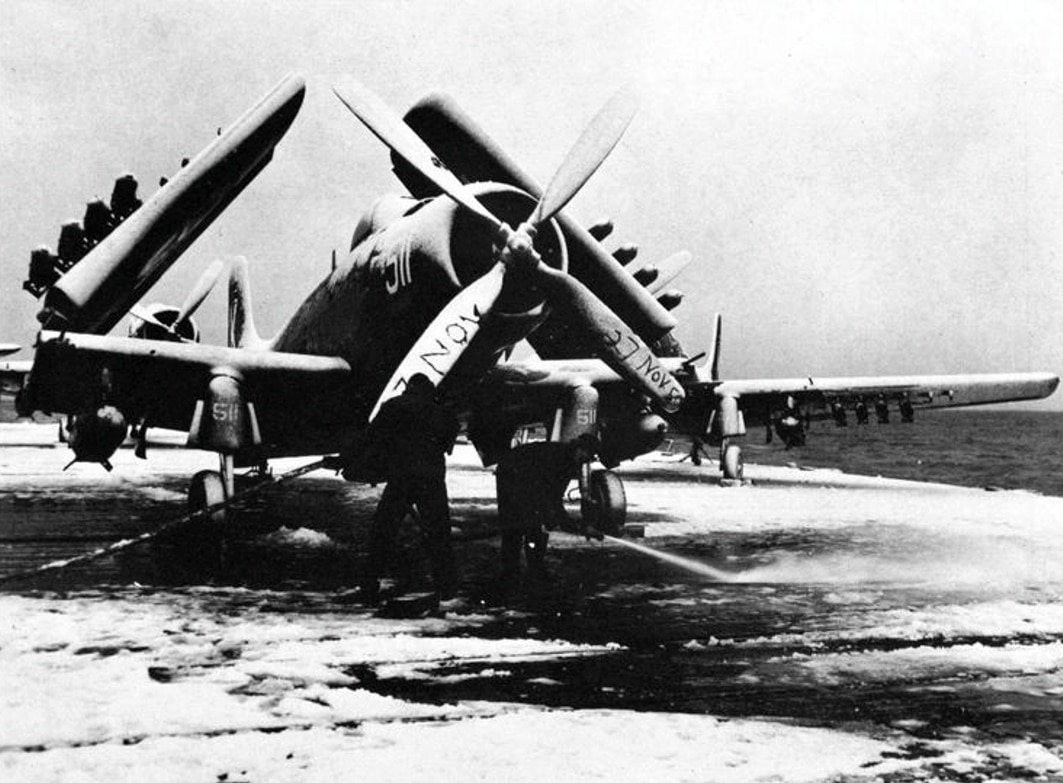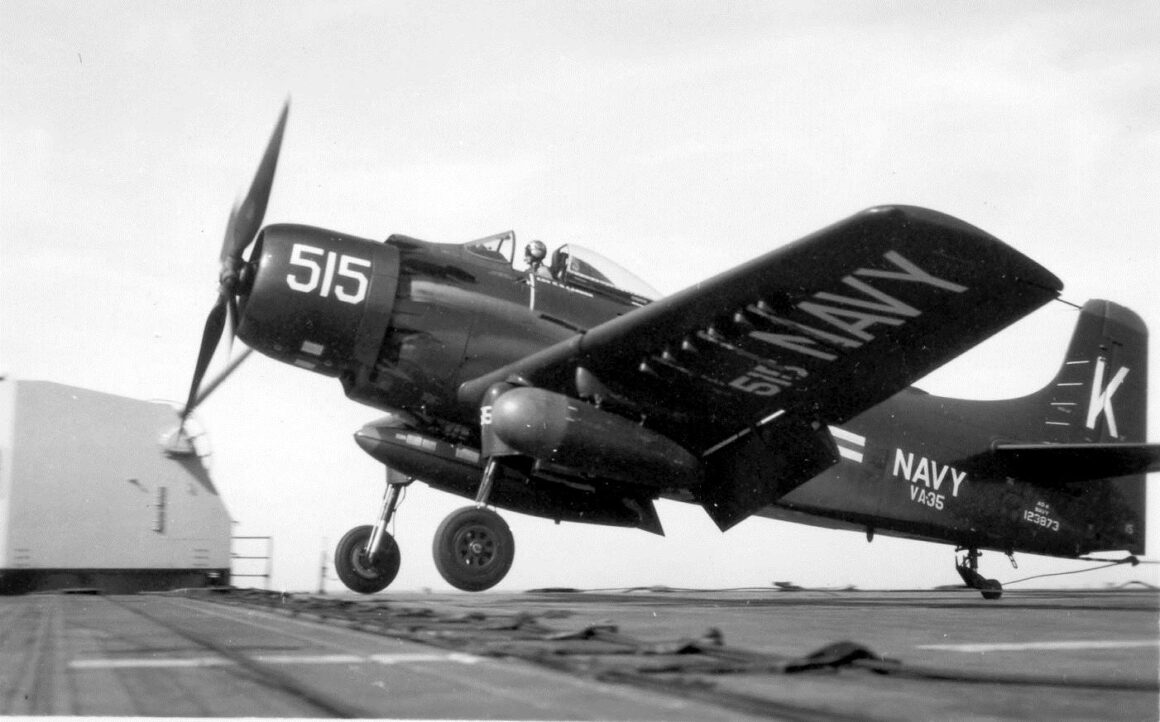The USS Leyte’s Only Combat Deployment Was Memorable for a Variety of Compelling Reasons
When the Essex-class aircraft carrier USS Leyte (CV-32) sailed for the Western Pacific in 1950, Carrier Air Group THREE (CVG-3) was her embarked air wing. The Leyte was destined to spend the fall of 1950 off the coast of South Korea, launching airstrikes against North Korean and Chinese targets as ordered by Commander, Task Force 77 and the Allied leadership in the region. This great video of the CVG-3 operating from the Leyte was uploaded to YouTube by airailimages.
[youtube id=”9HvVlWJT2Qw” width=”800″ height=”454″ position=”left”]

CVG-3 Starting Lineup
Embarked aboard the Leyte for her only combat deployment were VF-31 Tomcatters flying the Grumman F9F-2 Panther, VF-32 Swordsmen and VF-33 Tarsiers flying the Vought F4U-4 Corsair, VA-35 Black Panthers Flying the Douglas AD-3 and AD-4 Skyraider, Detachment 3 from VC-4 Night Cappers flying the Vought F4U-5N Corsair, Detachment 3 from VC-62 Fighting Photos flying the Vought F4U-5P Corsair, Detachment 3 from VC-33 Night Hawks flying the Douglas AD-4N Skyraider, Detachment 3 from VC-12 Bats flying the Douglas AD-3W Skyraider, and Detachment 3 from HU-2 Fleet Angels flying the Sikorsky HO3S-1 Dragonfly.

Combat and Loss
The Leyte arrived at Sasebo in Japan on 8 October and wasted no time before getting into action. From 9 October until 19 January 1951 the Leyte was at sea for 92 days- many of them while hampered by the atrocious weather in the region at that time of the year. Despite the weather CVG-3 logged over 11,000 hours during 3,933 sorties flown against enemy forces while inflicting massive damage upon enemy positions, supplies, transportation, and communications. The first African-American Naval Aviator, Ensign Jesse LeRoy Brown, was killed in action while defending Marines embroiled in the fight at the Chosin reservoir while flying from the Leyte on 4 December 1950.

The Rest of the Leyte Story
The Leyte returned to Norfolk for overhaul 25 February 1951 and was redesignated CVA-32 on 1 October 1952. This was the Leyte’s only deployment to the Pacific. After her initial cruise to the Caribbean and Eastern Pacific, she deployed to the Mediterranean and/or the North Atlantic seven times before being taken out of service as an attack carrier and converted to an antisubmarine aircraft carrier and redesignated CVS-32 on 8 August 1953. The ship spent several years working antisubmarine duty before being redesignated AVT-10 and was deactivated in 1959. She was scrapped in 1970.

